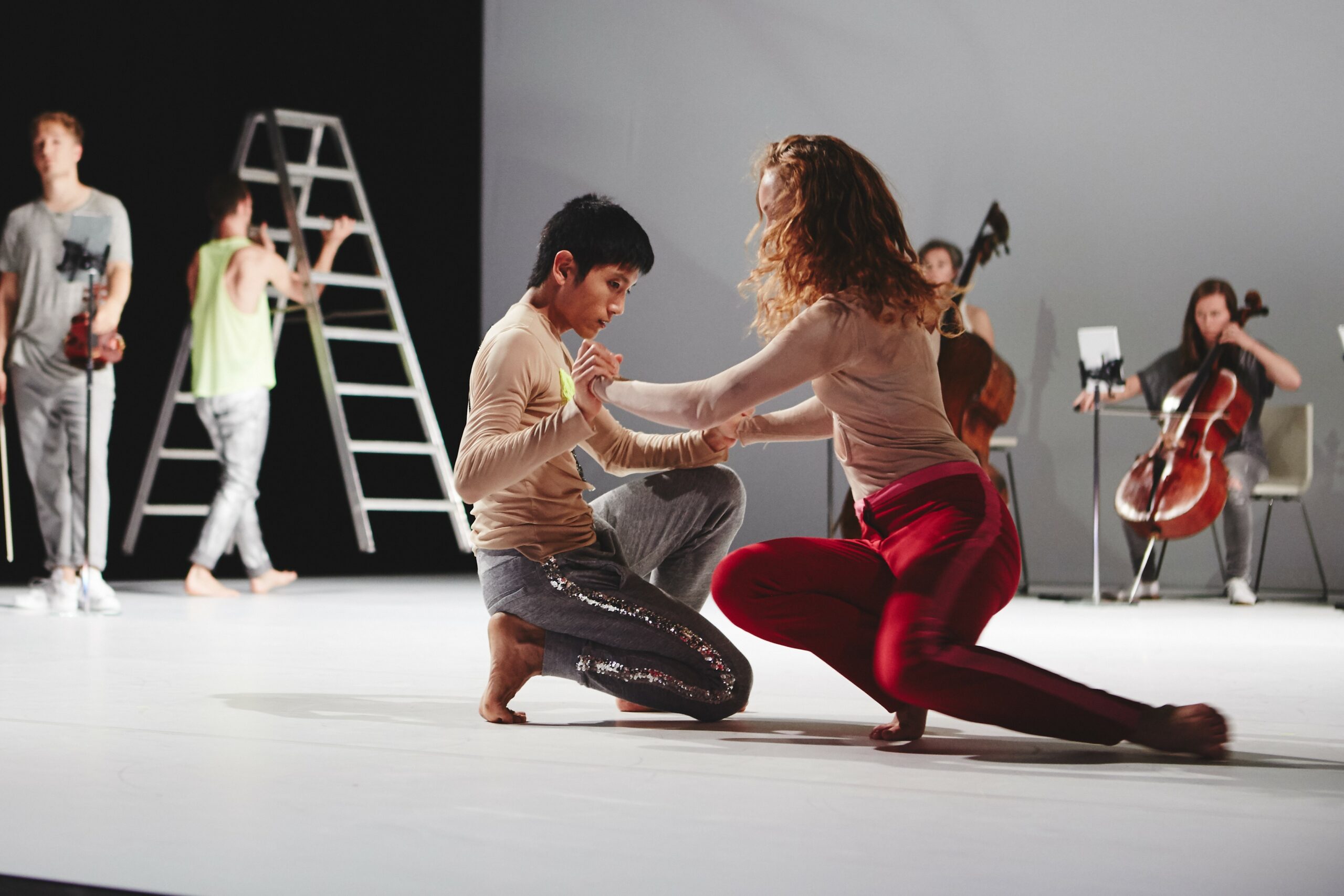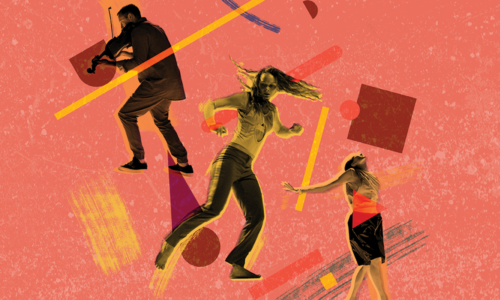13 February 2023

You were involved in the first production of Goldberg Variations: ternary patterns for insomnia, what was it like on the first day of rehearsals working with Scottish Ensemble?
I would consider the first rehearsal being our initial meeting with the Scottish Ensemble in Edinburgh at a local dance studio months before we began rehearsing in Stockholm. After some introductions and some words about the project, we jumped right in! Örjan and I showed a short dance phrase (I believe it was already set to variation 5) leaving both of us huffing and puffing. Then shortly after that, Örjan already had the musicians create their very own movement solos with the improvisation task of creating sound with their bodies. I was really impressed by their openness to just dive into the unknown so daringly! Many of the solos were so creative and even avant-garde that I think the musicians themselves were in awe of what they came up with!
I think one of the highlights of that day was moving in a trio with Cheryl and her violin during a photo shoot with the brilliant and cheerful Hugh Carswell. Cheryl, her violin, and I tuned into each other’s bodily shifts, and we navigated each other’s space in occasional contact and even weight-sharing. It was such a sweet moment of trust, grace, and humanity. It felt like an instance of art.
In this show you collaborate with the musicians on movement and physicality, what is it like working with performers who don’t share your extensive dance training?
Dancers can actually be locked in by their training because the sense of the “rightness” and “wrongness” of how we should move is so deeply conditioned, so it is rather refreshing to see the musicians of the Scottish Ensemble be so free from these preconceived notions of movement and be transported into action from a purity of intention and the inspiration drawn from their seasoned musical sophistication. The musicians might not be trained in dance, but they are PHYSICAL! I can’t help but feel them as rock stars on wild horses when they play in variation 12. It is thrilling to see their individual charisma and flair lighting up the stage as they pursue the sound of each moment that’s demanded within Bach’s 30 propositions.
"It seems like you are offered an experience of three things at the same time: the music, the dance, and what they become together."
Music and dance are often thought of as ‘universal languages’ how did you find these two forms communicated with each other in the rehearsal and development process?
This is not an easy question to answer in words, and maybe that is part of my answer. The communication of Bach’s music and dance created another realm for people’s minds, hearts, and souls to wander through and contemplate. Communication doesn’t necessarily mean agreement. I know that Örjan was mindful not to just fall into the pull of the different variations. In his “opposition” or “going against” the automatic idea or sentiment of the music in certain variations, he was trusting that another facet of our human experience would be revealed in the meeting of music and dance. I remember thinking that some of the dance was quite jarring against the music, but then after a while, I felt like I got the point. Have you tried a kimchi-grilled-cheese sandwich before? It might seem like a strange combination, and then you realise that it really works and that the “clash” is what brings out the extra spirit in each ingredient. I hope this comparison makes some sense…
A good example would be in the big solo of variation 25, it expresses melancholy in long strokes of notes, and the dancing is quite staccato, so I see that the dancing actually makes the audience hear with their eyes a possible layer of aggressive frustration and anger within what is played. The music also coaxes the dancer’s solo with a tenderness, making the fiery temperament of the physicality even keener. It seems like you are offered an experience of three things at the same time: the music, the dance, and what they become together.
With moments of contrast to the music, then moments of giving into the emotion of the music, and some moments of pure random ridiculousness, I think I really got Örjan’s intention with the piece during a post-performance talk in Umeå – Bach is relevant in so many daily situations, and it is for us all.
Can you describe a memorable moment from one of GV’s international tours?
I completely forgot the choreography at one point when I had to replace Danielle in her big solo in Variation 25 – and it was at the Kennedy Centre. I have quite the astounding poker face, so not many people could tell that I was hopelessly lost in the steps. It was actually a gift though. I had to take a pause – gift number one. (How many of those do we give ourselves in life?) Then, I had to decide between scrambling with my analytical brain to “get back on track”, or to see this as a rare chance to abandon myself into the flow and L-I-S-T-E-N to the essence of the music. I chose the latter – gift number two – and I realised what the solo was trying to say. That was a moment of living.
Maybe that’s the point of dancing and playing music…
Goldberg Variations- ternary patterns for insomnia, goes on tour in the UK from the 3rd till the 9th of March, with dates in Glasgow, Inverness, Dundee and Leeds.
